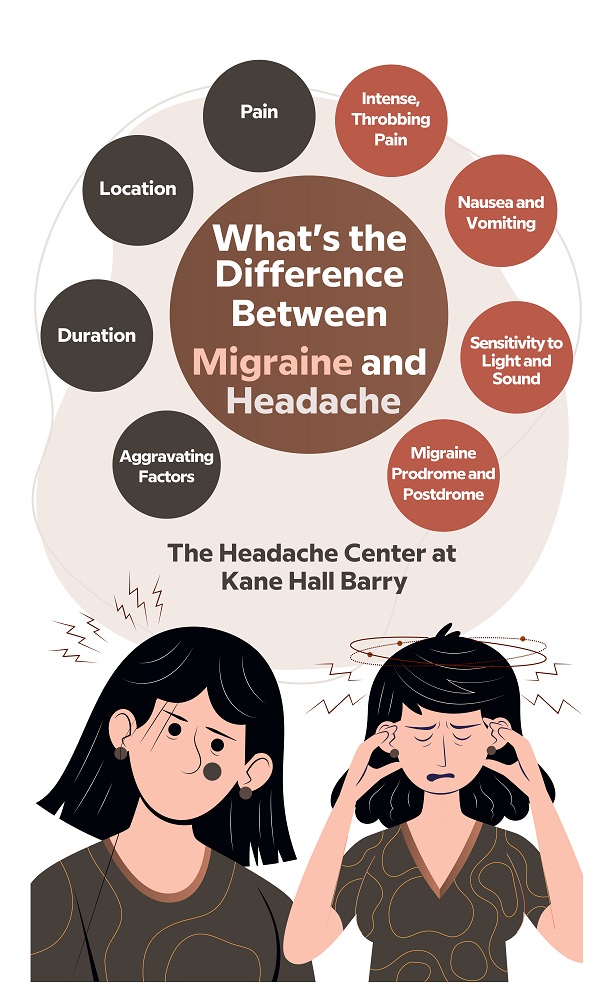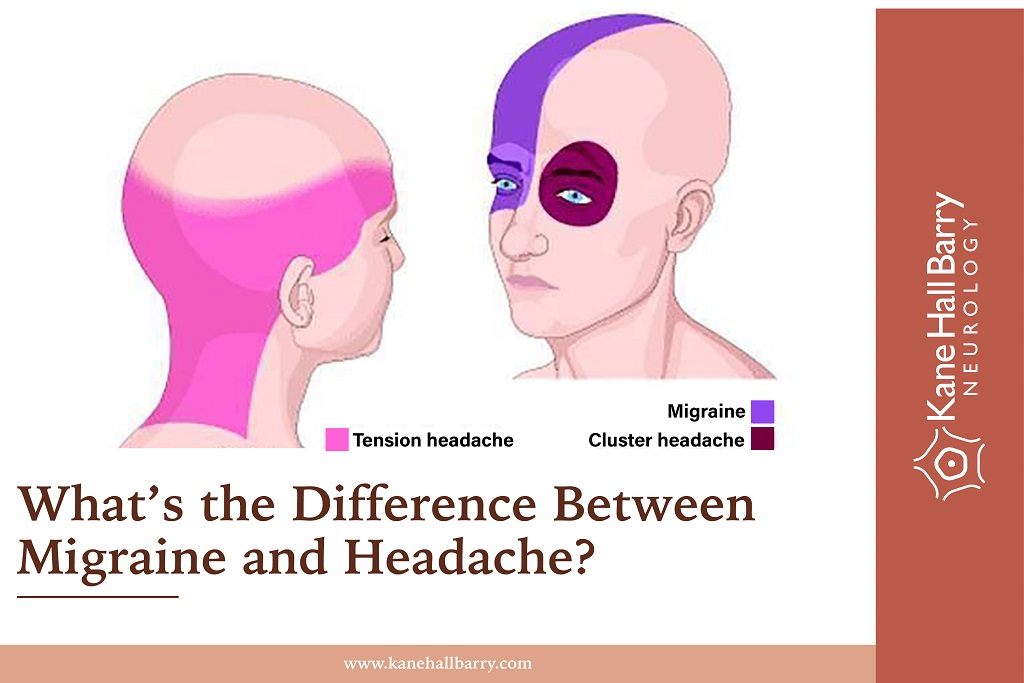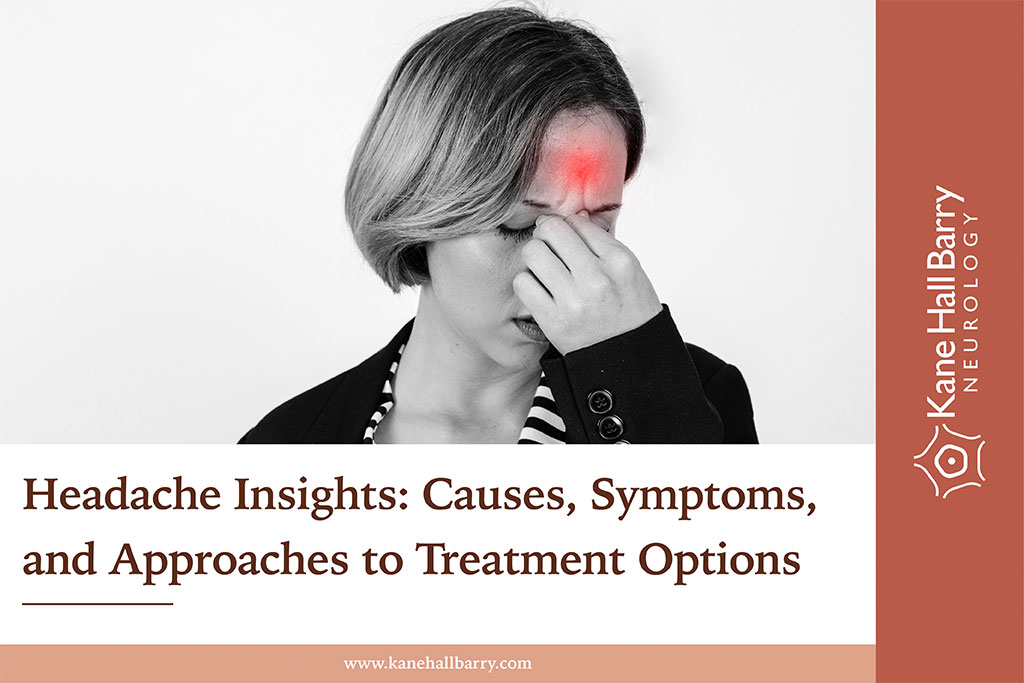When it comes to headaches, most people tend to lump them all together without considering the specific types and their underlying causes. Two common terms often used interchangeably are “migraine” and “headache.” However, these are distinct conditions with unique characteristics and treatment approaches.
In this blog, we’ll explore the differences between migraines and headaches, helping you better understand and differentiate between the two.
Understanding What are Migraines and Headaches?
Understanding Headaches
1. Definition of Headache
A headache refers to a common condition characterized by discomfort or pain in the head, scalp, or neck area. It is a subjective sensation that can range from mild to severe and can affect individuals of all ages. Headaches can occur as isolated incidents or as recurrent episodes, and they are often associated with various factors, including tension, stress, medical conditions, or external triggers.
2. Types of Headaches
There are several types of headaches, each with its own distinct features and causes. Understanding these different types of headaches can help in accurately identifying and managing specific conditions.
The main types of headaches include
- Tension Headaches
- Cluster Headaches
- Sinus Headaches
- Hormonal Headaches
- Rebound Headaches
- Migraines
3. Headache Symptoms
Headaches can vary in their presentation and severity, and understanding the common symptoms associated with headaches can help in identifying and managing them effectively. Here are some key headache symptoms to be aware of:
- Pain: Headaches typically involve pain or discomfort in the head, scalp, or neck area. The pain can range from mild to severe and may be throbbing, dull, or sharp in nature
- Location: The location of the pain can vary depending on the type of headache. It can be on one side of the head (as in migraines), on both sides (as in tension headaches), or generalized throughout the head.
- Duration: Headaches can last for varying lengths of time. They can be short-lived, lasting a few minutes or hours, or they can persist for days or even longer in some cases.
- Associated Symptoms: Headaches can be accompanied by other symptoms, which can vary depending on the underlying cause. These may include sensitivity to light and sound, nausea, vomiting, dizziness, fatigue, or difficulty concentrating
- Aggravating Factors: Certain factors or triggers can worsen headaches. These triggers can be different for individual and may include stress, certain foods or drinks, lack of sleep, poor posture, or environmental factors
Understanding Migraines
1. Definition of Migraine
A migraine is a complex neurological condition that typically involves severe, pulsating headaches on one side of the head. However, it’s important to note that migraines can also occur on both sides. Migraines are often accompanied by other symptoms such as nausea, vomiting, sensitivity to light and sound, and in some cases, visual disturbances known as auras.
2. Migraine Symptoms
Migraines often present with a range of symptoms that can vary from person to person and even from one migraine episode to another. Common migraine symptoms include:
- Intense, Throbbing Pain: Migraines are often characterized by severe, throbbing, or pulsating pain, typically on one side of the head. This pain can be debilitating and significantly impact daily activities
- Nausea and Vomiting: Many individuals with migraines experience nausea, sometimes leading to vomiting.
- Sensitivity to Light and Sound: Migraine attacks can make individuals vulnerable to bright lights and loud sounds. Even normal levels of light and sound can intensify their discomfort.
- Visual Disturbances (Aura): Some individuals experience visual disturbances before or during a migraine attack. These visual auras can include seeing flashes of light, blind spots, or zigzag patterns.
- Fatigue and Lethargy: Migraines can cause significant fatigue and feelings of exhaustion, even after the headache subsides.
- Migraine Prodrome and Postdrome: Some individuals experience warning signs before a migraine attack (prodrome), such as changes in mood, food cravings, or increased thirst. Following a migraine attack, individuals may also experience a postdrome phase characterized by fatigue, confusion, and mild headache.
Differentiating Migraines from Headaches
While migraines and headaches are often used interchangeably, it is crucial to understand that they are distinct conditions with different characteristics. By recognizing the key differences between migraines and headaches, individuals can better identify and manage their symptoms effectively. Here are the factors that can help differentiate migraines from headaches:

Pain Characteristics
- Location and Intensity: Migraines typically involve pain on one side of the head, although it can affect both sides as well. Headaches, on the other hand, tend to cause generalized pain or discomfort that can be felt on both sides of the head.
- Pain Duration: Migraines are often longer-lasting than headaches, typically lasting from a few hours to several days. Headaches, including tension headaches, usually resolve within a few hours or days.
- Associated Symptoms: Migraines are frequently accompanied by additional symptoms such as nausea, vomiting, sensitivity to light and sound, and visual disturbances (auras). Headaches generally lack these associated symptoms.
Sensitivity to Stimuli
- Light and Sound Sensitivity: Migraine sufferers commonly experience sensitivity to light (photo phobia) and sound (phonophobia) during an attack. In contrast, sensitivity to light and sound is not a typical feature of regular headaches
- Odor and Taste Sensitivity: Some individuals with migraines may have heightened sensitivity to certain odors or tastes, which can trigger or worsen their symptoms. This sensitivity is not typically associated with headaches.
Physical Activity and Migraine Triggers
- Exercise and Headaches: Physical activity can often alleviate or reduce the intensity of a regular headache. However, in some cases, intense exercise or physical exertion can trigger a migraine attack, making it worse for individuals prone to migraines.
- Exercise and Migraines: On the other hand, regular exercise and maintaining a consistent exercise routine have been shown to help prevent migraines in some individuals. It is essential to find a balance that suits each person’s individual tolerance and triggers.
Conclusion
Understanding the differences between migraines and headaches is crucial for proper diagnosis and effective management. If you frequently experience severe headaches or suspect migraines, it is recommended to consult a healthcare professional. The Headache Center at Kane Hall Barry Neurology specializes in diagnosing and treating migraines, as well as other conditions such as rare neuroimmunological disorders and epilepsy. Their expertise can provide you with comprehensive care and personalized treatment options. Seek their guidance to find relief and improve your overall well-being.
For more information Contact Us.






